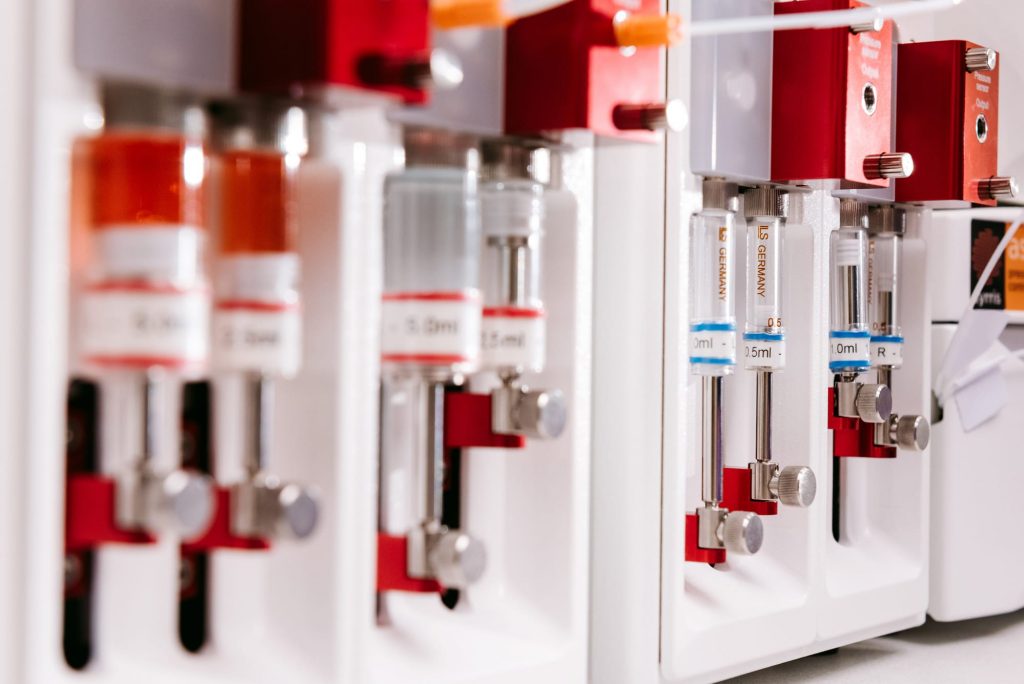Syrris Asia Syringe Pump video
Video Transcript
Hi my name is Max Drobot, I’m the Head of Products for Syrris. Today I’m going to talk to you about the Syrris Asia Syringe Pump. Syrris is an engineering company which develops, constructs and sells scientific equipment for chemists. We offer solutions for batch chemistry and flow chemistry. We are based in the UK, but we do sell all around the world through our local subsidiaries or our network of distributors. So, what do you need to do flow chemistry? To start flow chemistry, you need a pump, a reactor, which can be a glass micro reactor or tube reactor and you need a back pressure regulator in order to unlock some of the advantages of the chemistry, such as being able to heat your solvent above the boiling point also called superheating. Arguably, the most important part of the system is a pump. Why is the pump so important? In flow chemistry, one of the key reaction parameters is the residence time. In order to vary your residence time, you have two choices, you can change your type of reactors (but then you’ll be limited by hardware) or the easy solution is to vary the flow rate. So you want the pump to be able to deliver a wide range of flow rates with high accuracy and precision. You also want your flow chemistry pump to be able to pump any type of reagents and solvents, so that it doesn’t limit your chemistry, so you want maximum chemical resistance. You also want a pump that’s easy to service and maintain because obviously the pump will go through wear and tear and will need parts to be replaced. Historically, people who were starting with flow chemistry were using three types of pumps, hplc pumps, single barrel syringe pumps and dual syringe pumps. All of those pumps have drawbacks. hplc pumps are mainly designed for operating a high flow rate and high pressure, as it falls they lose a lot of the precision and accuracy at lower pressures and lower flow rates. Also the material of construction is mainly metal, so they are not as highly chemically resistant as you would like. Single barrel syringe pumps are limited by the volume of the syringe – once the syringe is fully dispensed, you can’t refill it – plus they have very limited automation, which one is enormously suited for the walk away experiments. Dual syringe pumps are, to a certain degree, fine and they are used in lots of major scale flow chemistry systems. They offer good chemical resistance but unfortunately they’re limited by the pressure range, which usually doesn’t exceed five bar. So with all those requirements in mind, Syrris designed the first ever flow chemistry pump specifically designed for fluid chemists, the Asia syringe pump. The pump has two channels, each independent, and each of those channels is made of three parts; the valve, the pressure sensor and the syringes. Pressure sensors are very important because they enable safety on your pump. The pump has an automatic shutdown built in when another pressure is detected and also when pressure cannot be achieved, cannot be reached (which is usually a sign of leakage) the pump will stop automatically. The pump can be controlled from the turn and twist and click wheel or connected to a computer via USB cable and fully automated by the Asia Manager software. The pump is easily serviceable by removing the two thumb screws at the bottom, you can then pull out the full block and then access each individual part, such as the syringes or the valve block. So you can service the pump with minimum effort and no tools required. The pump allows you to access flow rates from 1 microliter per minute up to 10 milliliter per minute. In order to enable maximum precision, we have to select the right syringe size for each flow rate that you want to achieve. The pumping mechanism is called V to V and uses two syringes that enable the continuous flow of solvent or reagent. When one of the syringe is pulling to refill, the other one is dispensing the volume out in the system. All the wetted parts are glass and PTFE enabling maximum chemical resistance. Syrris offers the wide range of modules for flow chemistry. All those modules can be assembled in the different types of systems, but all the systems have one thing in common; the Syrris Asia Syringe Pump. This pump is the first one that has been developed specifically for flow chemistry; it’s a high-performance pump that enables you to access a wide range of chemistries for more information, please have a look at www.syrris.com

Asia Syringe Pump
The ultra smooth Asia Pump for flow chemistry is extremely chemically resistant and is rated to 20 bar (300psi). The compact microfluidic module offers two independent flow channels each with an integrated pressure sensor and a flow rate range from 1.0 μL to 10 mL/min. The innovative pump is controlled by the easy to use and intuitive front panel (twist and click control knob) or by the Asia Manager PC software.